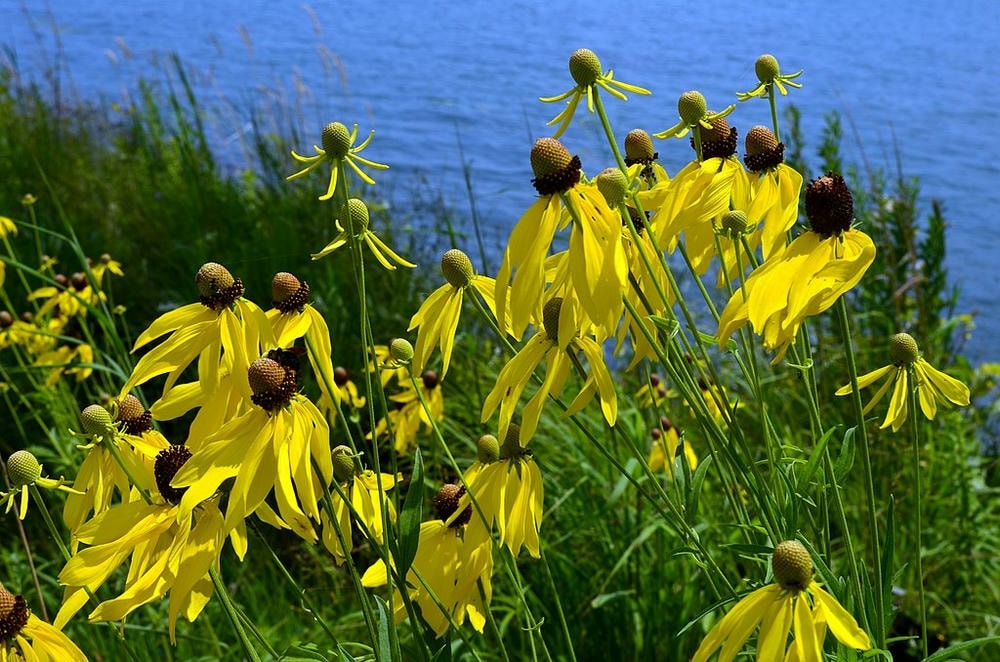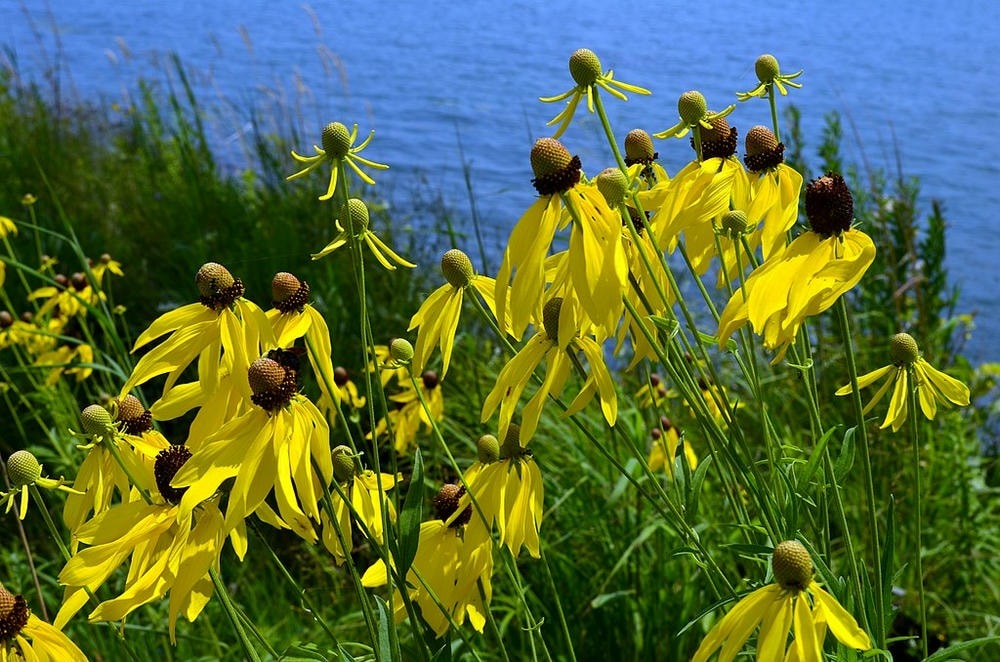About This Plant
Ratibida pinnata, commonly known as Gray-headed Coneflower, is a tall, long-lived perennial native to prairies, savannas, and open woodlands across much of North America. This plant grows to a height of 3 to 5 feet, with deeply lobed leaves and long, slender stems that support vibrant yellow flowers, creating an eye-catching display in any garden. The blooms, which appear from midsummer to early fall, consist of drooping yellow petals surrounding a distinctive central cone, which starts as a grayish-green color and matures to brown.
This species thrives in full sun and well-drained soils but is adaptable to various conditions, including drought. It is a popular choice for pollinator gardens, prairie restorations, and naturalized landscapes because of its low-maintenance requirements and resilience once established. It is also relatively resistant to deer and other herbivores.
Ratibida pinnata is highly beneficial to wildlife, particularly pollinators. The bright yellow flowers attract various bees, butterflies, and other insects seeking nectar and pollen. In late summer and fall, the central cones provide a valuable seed source for birds, especially goldfinches. The plant’s tall, sturdy stems also provide habitat and shelter for insects and small animals, contributing to the overall health of prairie ecosystems.
In addition to serving as a food source, Gray-headed Coneflower helps support biodiversity by promoting beneficial insect populations and supporting the reproduction of native plants. Its deep root system improves soil structure and prevents erosion, further enhancing its ecological value.


